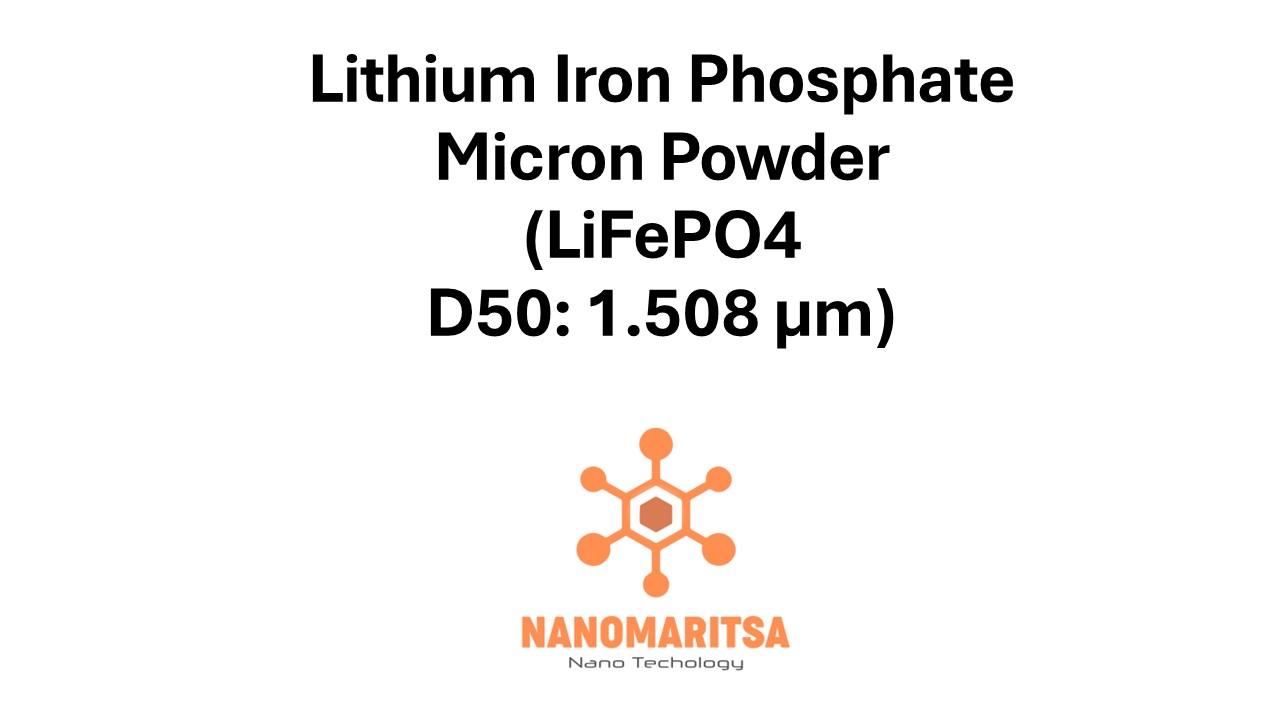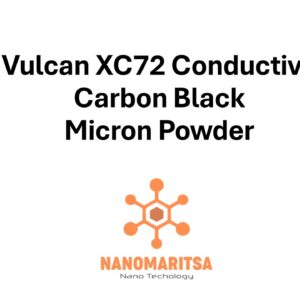Lithium Iron Phosphate Micron Powder (LiFePO₄, D50: 1.508 µm) is a high-performance cathode material for lithium-ion batteries, known for its excellent stability, high safety, long cycle life, and environmental friendliness. With a D50 particle size of 1.508 µm, this micron powder is optimized for applications requiring high-performance energy storage, such as electric vehicles (EVs), renewable energy storage, and portable electronics.
1. Key Properties
D50 Particle Size (1.508 µm) The optimal particle size ensures efficient manufacturing processes, improving battery performance by enhancing electrochemical activity and providing a better charge/discharge rate.
High Purity LiFePO₄ is produced with high purity, ensuring consistent electrochemical performance and minimal degradation over extended use.
High Safety Lithium iron phosphate is well-known for its excellent thermal stability and resistance to thermal runaway, making it one of the safest cathode materials for lithium-ion batteries.
Long Cycle Life LiFePO₄ offers excellent cycle stability, providing batteries with a long lifespan and sustained capacity retention, ideal for EVs and large-scale energy storage.
Environmental Friendliness Compared to other cathode materials like lithium cobalt oxide (LCO), lithium iron phosphate is more environmentally friendly, using less toxic materials such as iron and phosphate.
2. Applications
Electric Vehicles (EVs) Used as a cathode material in lithium-ion batteries for electric vehicles, where long life, high safety, and cost-effectiveness are key requirements.
Energy Storage Systems (ESS) LiFePO₄ is employed in large-scale energy storage systems, helping to store energy from renewable sources such as solar and wind for later use.
Portable Electronics Used in rechargeable batteries for smartphones, laptops, tablets, and other consumer electronics, providing a safe and reliable power source.
Backup Power Systems Lithium iron phosphate is also used in uninterruptible power supplies (UPS) and other backup power systems that require reliable and long-lasting energy storage.
Military and Aerospace LiFePO₄’s high safety and long cycle life make it suitable for use in demanding military and aerospace applications, including communication systems and power storage.
Grid Stabilization As renewable energy sources such as solar and wind grow, lithium iron phosphate-based batteries help stabilize the grid by storing and distributing excess energy.
3. Advantages
High Safety LiFePO₄ is known for its exceptional safety profile, reducing the risks of fire and explosion, making it ideal for use in high-demand applications like EVs and grid storage.
Long Cycle Life Offers more charge/discharge cycles compared to other cathode materials, reducing the cost of ownership over time for EVs and ESS.
High Efficiency With excellent charge/discharge efficiency, LiFePO₄ provides better performance and reduces energy loss, contributing to overall efficiency in storage and power applications.
Environmental Sustainability Its use of iron and phosphate, which are more abundant and less toxic compared to cobalt or nickel-based materials, makes it more environmentally sustainable.
Cost-Effectiveness While LiFePO₄ may have a lower energy density compared to other cathode materials, its lower cost, long cycle life, and high safety make it an attractive option for various applications, particularly in large-scale systems and EVs.
4. Recent Trends and Research
Electric Vehicle Market The increasing demand for electric vehicles has driven research and development into enhancing the performance and energy density of LiFePO₄ to make it more competitive with nickel-cobalt-based batteries.
Renewable Energy Integration Research is focused on optimizing LiFePO₄ batteries for energy storage systems that integrate with solar and wind power to provide a stable energy supply for grids.
Battery Recycling As lithium-ion batteries become more ubiquitous, efforts to recycle LiFePO₄ batteries and recover valuable materials, such as lithium and iron, are gaining attention, contributing to a circular economy.
Nano-Enhanced LiFePO₄ Ongoing research aims to improve the material’s properties through nano-engineering, which can further enhance its conductivity, energy density, and overall battery performance.
Solid-State Batteries LiFePO₄ is also being studied for use in solid-state battery technologies, which promise to offer better safety, higher energy density, and longer life than traditional liquid-electrolyte lithium-ion batteries.
5. Future Prospects
Electric Vehicle Expansion As EV adoption grows, LiFePO₄’s role in providing safe, long-lasting, and cost-effective batteries will continue to expand, particularly for electric buses, trucks, and affordable passenger vehicles.
Grid Energy Storage With the increasing need for large-scale energy storage systems to support renewable energy sources, LiFePO₄ will play a key role in stabilizing power grids and enabling more sustainable energy solutions.
Advances in Battery Technology Research into enhancing the energy density and charging speed of LiFePO₄ is expected to improve its competitiveness with other lithium battery chemistries, ensuring its place in next-generation energy storage solutions.
Recycling and Sustainability LiFePO₄’s material composition, with abundant and non-toxic elements, positions it well for future recycling initiatives, reducing environmental impacts and ensuring its continued viability.
Cost Reduction and Scalability As demand for LiFePO₄ increases, advances in manufacturing technology and raw material sourcing are expected to further reduce costs, making it an even more attractive option for a wide range of applications.
With its D50 particle size of 1.508 µm, high purity, and exceptional performance characteristics, Lithium Iron Phosphate Micron Powder (LiFePO₄) is an essential material for a wide range of high-performance lithium-ion battery applications. Its superior safety, long cycle life, and cost-effectiveness make it a cornerstone for the development of sustainable, high-efficiency energy storage solutions for the future.






